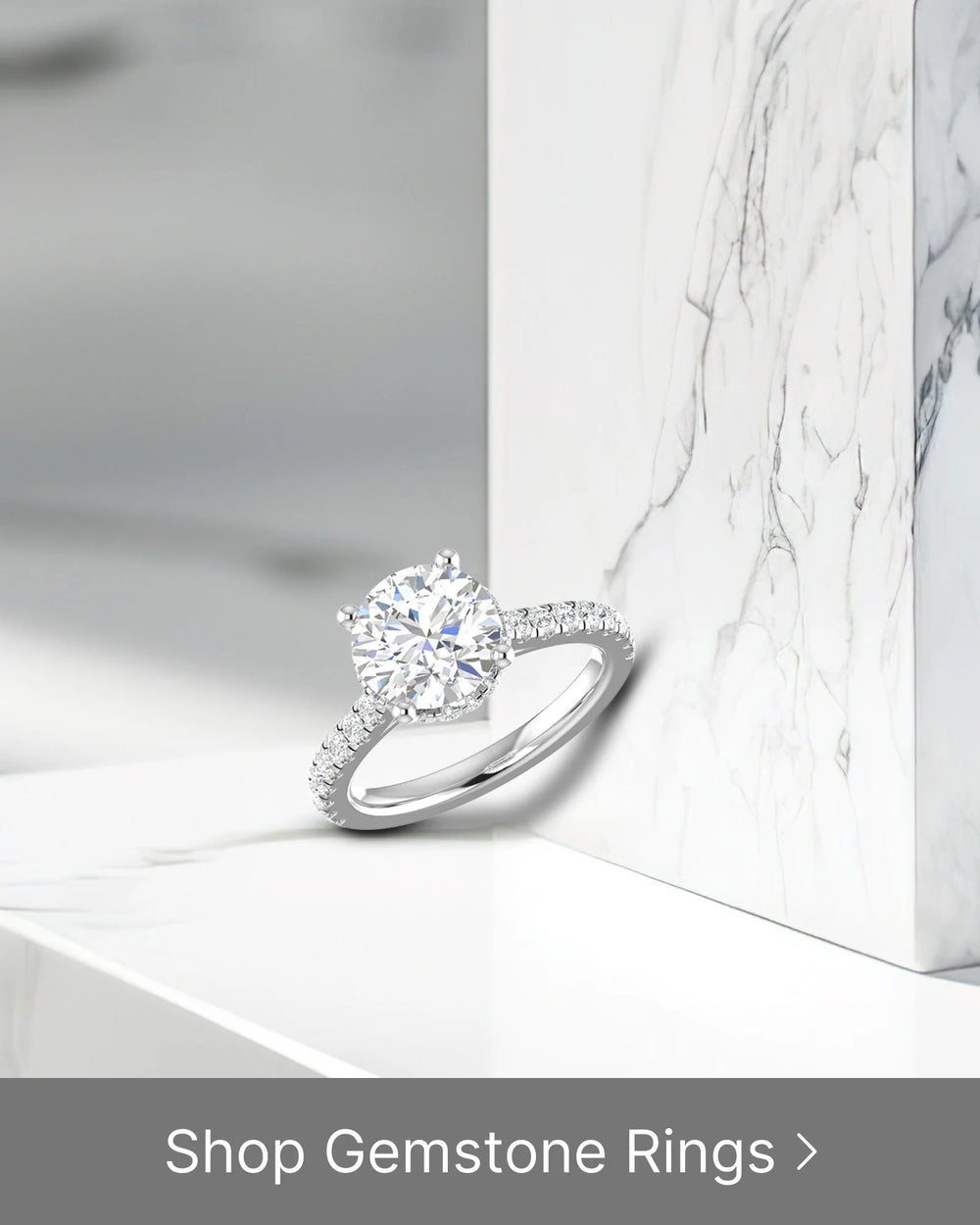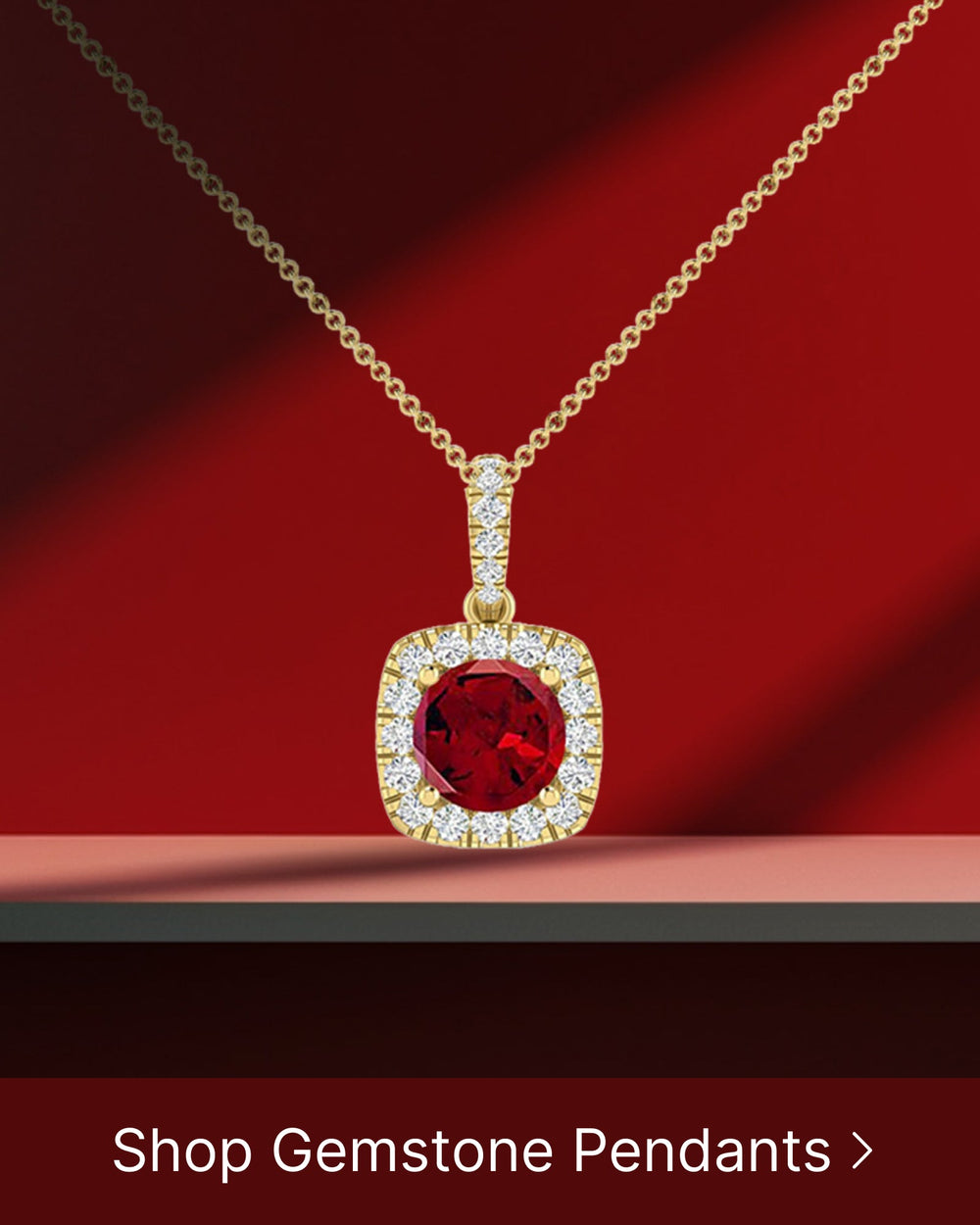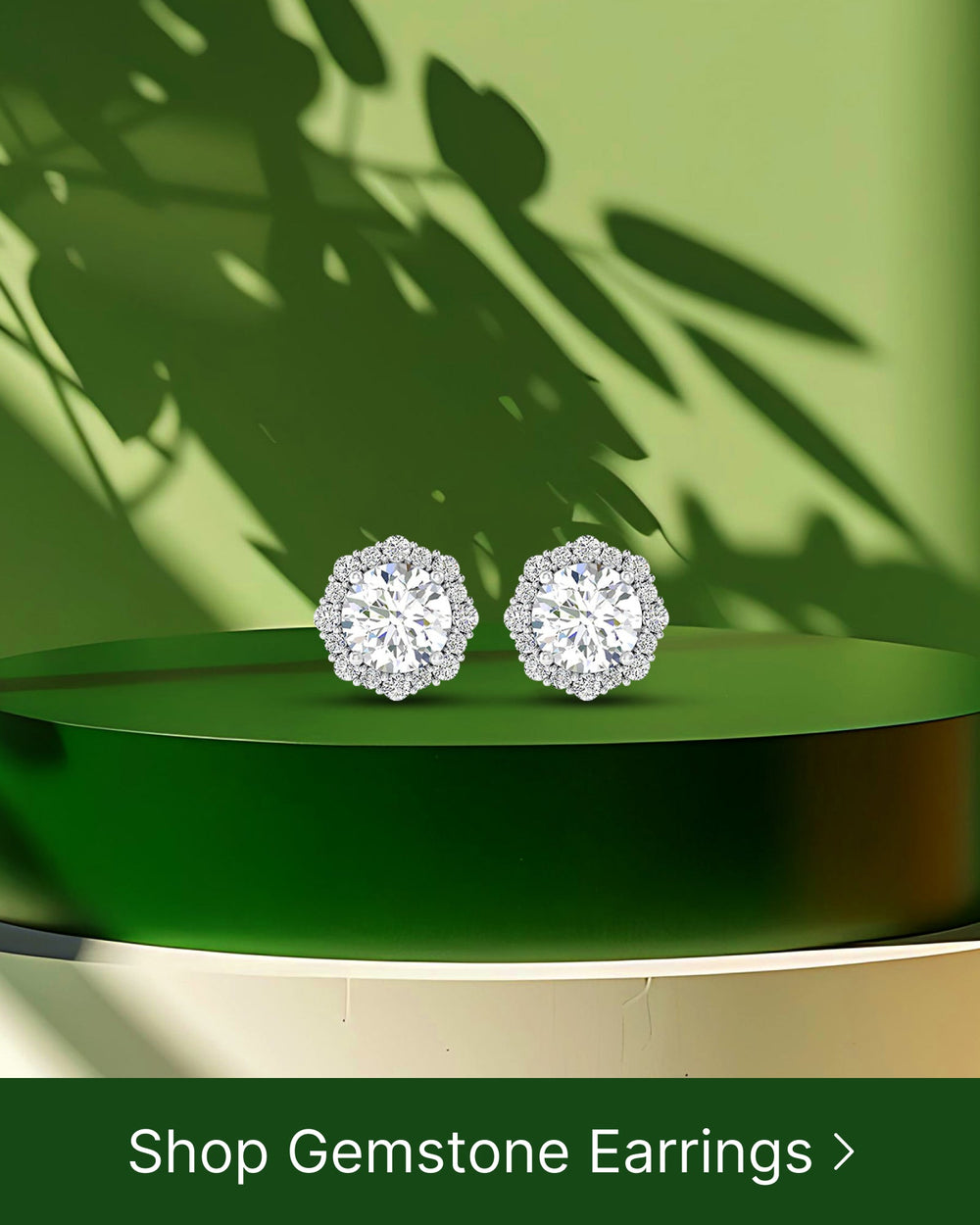The Symbolic Significance of Diamonds: Understanding Their Meaning
Diamonds have long captured the human imagination with their mesmerizing beauty and radiant presence. Beyond their physical attributes, diamonds hold a deep symbolic significance that transcends cultures, historical periods, and the realms of literature and art. In this article, we will delve into the multifaceted meanings of diamonds, exploring their historical, cultural, psychological, and spiritual interpretations.
The Historical Significance of Diamonds
Throughout history, diamonds have played a significant role in various societies, leaving an indelible mark on human culture. From ancient beliefs and traditions to their prominence in the Middle Ages and the Victorian era, diamonds have always held a special place in the hearts and minds of people.
Ancient Beliefs and Traditions
In ancient times, diamonds were imbued with immense symbolism. Many civilizations believed that diamonds possessed magical powers and were associated with the gods. Some cultures considered them as tears of the gods, while others thought they held the power to ward off evil spirits. Diamonds were treasured as talismans of protection and symbols of purity.
Ancient Egyptians, for instance, believed that diamonds were fragments of stars fallen from the sky. They believed that wearing diamonds would bring them closer to the divine and grant them protection from harm. In India, diamonds were believed to have the power to heal and bring good fortune. They were used in various rituals and ceremonies, symbolizing the eternal and unbreakable bond between humans and the divine.
Diamonds in the Middle Ages
During the Middle Ages, diamonds took on new meanings. They became associated with royalty and wealth, adorning crowns, scepters, and other regal insignia. Diamonds were seen as a symbol of power, majesty, and divinity. Their scarcity contributed to their allure, making them highly coveted possessions.
In medieval Europe, diamonds were not only worn by kings and queens but also by the nobility. The aristocracy saw diamonds as a status symbol, displaying their wealth and social standing. Diamonds were often passed down through generations as family heirlooms, representing the legacy and heritage of noble families.
The Victorian Era and Diamonds
The Victorian era marked a resurgence of diamond symbolism. Queen Victoria, with her deep appreciation for jewelry and love for diamonds, popularized the notion of diamond engagement rings. Diamonds became representative of love, endurance, and commitment. The sentiment behind diamonds as a declaration of everlasting love prevailed and continues to this day.
During the Victorian era, diamonds were not only reserved for engagement rings but also adorned various pieces of jewelry. The intricate designs and craftsmanship of diamond jewelry became highly sought after, reflecting the romantic ideals of the time. Diamonds were seen as a reflection of one's social status and were often worn to social events and gatherings, showcasing one's wealth and taste.
Furthermore, the discovery of diamond mines in South Africa during the late 19th century led to an increase in the availability of diamonds. This, in turn, made diamonds more accessible to a wider range of people, further cementing their popularity and cultural significance.
In conclusion, the historical significance of diamonds spans across civilizations and time periods. From their mystical associations in ancient times to their status as symbols of power and love in the Middle Ages and the Victorian era, diamonds have captivated the human imagination for centuries. Their allure continues to endure, making them not only precious gemstones but also bearers of history and cultural significance.
The Cultural Interpretation of Diamonds
Diamonds hold distinct meanings across different cultures around the world. The Western perspective views diamonds through the lens of luxury and materialism, while Eastern cultures attribute spiritual and mystical significance to these precious gems.
Let's explore further the cultural interpretations of diamonds in both Western and Eastern societies.
Diamonds in Western Cultures
In Western cultures, diamonds often symbolize status, wealth, and success. They are not only prized for their beauty but also as investments and expressions of social standing. Diamonds become markers of achievement and opulence, reflecting the values and aspirations of these societies.
Throughout history, diamonds have been associated with power and authority. In medieval Europe, only the nobility and the wealthy elite could afford to wear diamonds, making them a symbol of social hierarchy. The allure of diamonds grew even stronger during the Renaissance, when they became popular among the European aristocracy.
Today, diamonds are commonly used in engagement rings, signifying love and commitment. The tradition of giving a diamond engagement ring dates back to the 15th century, when Archduke Maximilian of Austria proposed to Mary of Burgundy with a diamond ring. This romantic gesture sparked a trend that continues to this day.
Eastern Perspectives on Diamonds
In contrast, Eastern cultures such as India and China perceive diamonds in a more spiritual light. In ancient Vedic traditions, diamonds were revered as symbols of enlightenment and purity. They were believed to possess mystical and healing properties, enhancing spiritual growth and connecting the wearer to higher realms.
In India, diamonds have a deep-rooted significance in Hindu mythology and are associated with various deities. The Sanskrit word for diamond, "vajra," translates to "thunderbolt" or "indestructible." This reflects the belief that diamonds are not only physically resilient but also spiritually invincible.
Chinese culture also attributes spiritual qualities to diamonds. The Chinese word for diamond, "jingyu," is often used to describe a person with exceptional qualities, such as strength, resilience, and wisdom. Diamonds are believed to bring good fortune and protect against negative energies.
Throughout history, diamonds have been treasured by Eastern rulers and nobility. In ancient China, diamonds were reserved for the emperor and his court, symbolizing power and authority. In India, diamonds adorned the jewelry of kings and queens, signifying their divine right to rule.
Today, the cultural interpretations of diamonds continue to evolve. While Western societies still value diamonds for their material worth, there is a growing appreciation for their ethical and sustainable sourcing. In Eastern cultures, diamonds remain symbols of spirituality and enlightenment, connecting individuals to their inner selves and the universe.
The Symbolism of Diamonds in Literature and Art
For centuries, diamonds have inspired writers and artists alike, serving as powerful metaphors and themes in literature and visual arts.
When it comes to diamonds in classic literature, these precious stones often represent more than just their physical attributes. They become symbols of rarity, perfection, and aspiration, captivating the imaginations of readers throughout the ages. In many stories, diamonds serve as catalysts for adventure and transformation, leading characters on journeys that explore the depths of their desires and the limits of their ambitions.
One notable example of the symbolism of diamonds in classic literature can be found in "The Necklace" by Guy de Maupassant. In this renowned short story, a diamond necklace becomes a central object that symbolizes unattainable desires. The necklace, with its dazzling beauty and allure, represents the protagonist's longing for a life of luxury and social status. As the story unfolds, the diamond necklace takes on a deeper meaning, highlighting the consequences of vanity and the pursuit of material possessions.
Another literary work that explores the symbolism of diamonds is "The Diamond as Big as the Ritz" by F. Scott Fitzgerald. In this fantastical tale, a massive diamond serves as a metaphor for wealth and power. The diamond, hidden away in a remote location, represents the unattainable riches that exist only in the realm of imagination. As the characters in the story navigate the allure and dangers associated with this extraordinary gem, the diamond becomes a symbol of the corrupting influence of wealth and the illusion of invincibility.
Turning our attention to the world of visual arts, diamonds have been depicted in various forms, allowing artists to explore their symbolism beyond their tangible beauty. Artists have used diamonds to represent clarity, illumination, and the multifaceted nature of human experience. By harnessing the brilliance of diamonds, these artists create visual compositions that invite viewers to contemplate the layers of meaning behind these precious gems.
One artist who delved into the symbolism of diamonds in his work is the renowned painter Vincent van Gogh. In his masterpiece "Starry Night," van Gogh uses diamond-like stars to convey a sense of ethereal beauty and transcendence. The stars, with their radiant glow, symbolize the infinite possibilities of the universe and the profound connection between the earthly and the celestial.
Similarly, the artist Salvador Dalí incorporated diamonds into his surrealist paintings to explore the complexities of the human psyche. In his iconic work "The Persistence of Memory," Dalí depicts melting clocks adorned with diamonds, symbolizing the fleeting nature of time and the paradoxical relationship between permanence and impermanence. The diamonds, with their sharp edges and sparkling facets, serve as reminders of the ever-present tension between the tangible and the intangible.
Through literature and art, diamonds continue to captivate our collective imagination, offering a rich tapestry of symbolism and meaning. Whether they represent unattainable desires in classic literature or serve as visual metaphors in paintings, diamonds remind us of the profound impact that these precious gems have had on human culture and creativity.
The Psychological Interpretation of Diamonds
From a psychological standpoint, diamonds intertwine with human emotions, acting as potent symbols of wealth, power, eternity, and love.
Diamonds as a Symbol of Wealth and Power
The association between diamonds and wealth is deeply ingrained in society. Diamonds represent affluence, luxury, and social status. As a visible display of opulence, they serve as status symbols, reflecting power, success, and influence.
The Diamond as a Symbol of Eternity and Love
Perhaps the most renowned symbolism of diamonds is their connection to eternal love. Diamonds in engagement rings and wedding bands epitomize the unbreakable bond between two individuals. They symbolize commitment, loyalty, and endurance, embodying the timeless nature of true love.
The Spiritual and Metaphysical Aspects of Diamonds
Beyond their material and cultural significance, diamonds hold spiritual and metaphysical connotations that resonate deeply with many.
Diamonds in Astrology and Healing
Astrologically, diamonds are associated with clarity, strength, and invincibility. They are believed to enhance spiritual energy and promote balance, alignment, and personal growth. Some healers utilize diamonds' vibrational frequencies to restore clarity and harmony to the mind, body, and spirit.
The Diamond as a Spiritual Symbol
The diamond's inherent properties, such as brilliance and durability, make it a potent spiritual symbol. It represents the journey of the soul, the transformative power of light, and the infinite potential within every individual. Diamonds inspire us to shine our brightest and embrace our true essence.
In conclusion, diamonds have etched their symbolic significance across time and cultures, embodying different meanings and capturing the human fascination with their majesty. From their historical and cultural interpretations to their exploration through literature, art, psychology, and spirituality, diamonds continue to captivate our imagination and awaken our sense of wonder. Understanding the diverse meanings behind diamonds enriches our appreciation of these precious gems and unveils the extraordinary depth of their symbolism.





